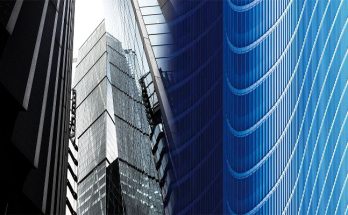The best way to ensure that you’re getting the most out of your business property is to have a good understanding of its value. There are a number of things that you need to take into account, including leasehold improvements and taxation when selling your business property.
Tax implications of selling business property
When selling a business, the tax implications can be complex. There are several factors to consider, including the type of business, the sale structure, and the tax rules of various states. Fortunately, a professional tax accountant can help you make sense of it all.
A business sale is taxed on the amount of gain it receives, and on the monies, it pays out. The IRS requires that business owners report the proceeds on Form 8594, the Asset Acquisition Statement.
Taxes can also affect the timing of a sale. Rather than pay taxes at the time of purchase, a seller might elect to hold off on paying taxes until the shares of the company are sold. This can be advantageous if a business owner is planning on retiring in a few years.
One of the tax perks of selling a business is the ability to roll the proceeds into a diversified portfolio. Another tax break is the qualified business income deduction.
Obsolescence impacts the value of your business
Obsolescence is a term used for the loss of value in an asset. This can occur in the form of economic obsolescence, functional obsolescence, or incurable obsolescence.
Economic obsolescence occurs when the value of an asset declines due to external factors. It can include legislative changes, new zoning laws, or changes in market demand.
The cost of repairing, maintaining, or replacing an item can affect the property’s value. For example, if the cost of adding a swimming pool to a house is more than it is worth, the property will decrease in value.
Economic obsolescence can also be a result of external factors such as crime rates, the availability of low-income housing, or new zoning rules. In addition to these factors, the area where the home is located may become less desirable.
Unlike the case with functional obsolescence, incurable obsolescence is not something that the owner can fix. These conditions are more difficult to diagnose and treat.
Leasehold improvements are improvements made to the property
Leasehold improvements are modifications to a business property made for a specific tenant. This is generally done in an effort to make the space more functional. They may include painting, replacing carpet, adding office cubicles, or installing custom light fixtures.
Leasehold improvements can be either a requirement of a landlord or a request from a tenant. In most cases, a landlord will pay for these improvements. It is up to the tenant to ensure the improvements are not damaged or destroyed. A tenant may opt to remove them, but he or she must do so in a way that will not harm the property.
When the lease is over, the property is then the property of the landlord. The tenant will not have to pay taxes on these improvements. However, he or she will be required to amortize them over the remaining lease term.
Leasehold improvements can be a complicated area within the assessment function. The IRS allows depreciation on improvements over a period of 20 years or longer.
Negligence on a business property
If you have been injured on the property of a business, you may be entitled to compensation. There are several ways to recover damages, but you need to establish that your injury was caused by negligence on the part of the business. You can also file a lawsuit against the occupier of the property.
The law says that all business owners have a duty to maintain their property in a safe condition. Generally, this means keeping it free of hazardous conditions. This includes keeping it clean, alerting customers to dangerous conditions, and fixing any hazards as soon as they are discovered. Usually, the owner has a certain amount of time to remedy a hazard, but if a hazard persists, you can sue.
In order to establish negligence, you must show that the property owner failed to act as a reasonable person would. A faulty security system, for instance, may result in a negligent security claim. Another example is a spill of milk in an aisle.





